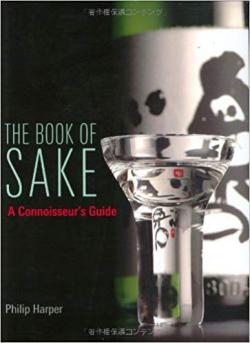The Book of SAKE, a Connoisseur's Guide

By Philip Harper
Kodansha International, 2006
ISBN 4770029985
Review by Sir Hugh Cortazzi
I used to be asked sometimes by people who had never been to Japan "Do you like sake?" This is rather like asking you when you have been to France whether you like wine! Sake, as this guide explains, is as varied as wine. It can be quaffed simply as a good drink or savoured by the connoisseur.
Sake used not to be generally available in Britain. Now sake brands can be bought in some supermarkets as well as in Japanese food shops and of course in the proliferating Japanese restaurants. Sake is becoming an increasingly popular beverage in Britain. But there are still far fewer sake connoisseurs than wine buffs over here. This guide should help to redress the balance and increase the enjoyment of sake, even if it is likely to be many years before there are as many different sake brands on sale in Britain as there are of wine.
While sake has been brewed outside Japan e.g. in California, it is essentially a Japanese drink and it seems unlikely that sake will ever be produced in as many countries as wine and beer. Most imbibers of sake understandably consider that sake goes best with Japanese cuisine, but Philip Harper notes the Japanese saying "nihonshu wa ryori wo erabanai" which he translates freely as "sake does not get into fights with food." He declares that "sake goes well with many non-Japanese dishes" including Western, Chinese and Indian food. Many readers will take some convincing that the true flavours of sake can be tasted with a hot Indian curry, but Harper is a true sake convert and like many converts is an extreme enthusiast for his favourite tipple!
The book is in four chapters. The first explains to the reader what sake is all about and deals among other topics with such questions as the temperature at which sake should be drunk and the type of cups to use. Sake can be drunk hot, luke- warm or cold depending on the mood and taste of the drinker, the season and the food which accompanies the sake. The second chapter describes the different types of sake and the specialised vocabulary which is part of sake lore.
The third chapter, which introduces the reader to local breweries and sake styles, includes twenty pages devoted to local sake types and producers. Once you get to know a few of these "jisake" you may well find that you develop a contempt for the popular brands in much the same way as the connoisseur of 'real ale' feels about the run of the mill pub beers belonging to the major chains.
The fourth chapter entitled "The Brewer's Craft" explains the various stages in brewing sake from the treatment of the raw material (polished rice) to storage and shipping. As with beer and whisky water is a key element (80% of sake is water). So are the types of rice used, but "their influence on the final flavour is not as all-pervasive as is true of the various strains of grape used in wine-making." The author notes that "the traditional pattern of sake being brewed and consumed in one-and-a-bit year cycle is still prevalent" but there are younger types coming to the market as well as more mature varieties. So we don't have to drink our sake young although "vintage" is not a term to apply to good sake.
Interesting aspects of sake which emerge from Harper's study are the colourful labels with their often idiosyncratic calligraphy, the shapes of the bottles and other containers including the kegs or barrels used in celebrations.

